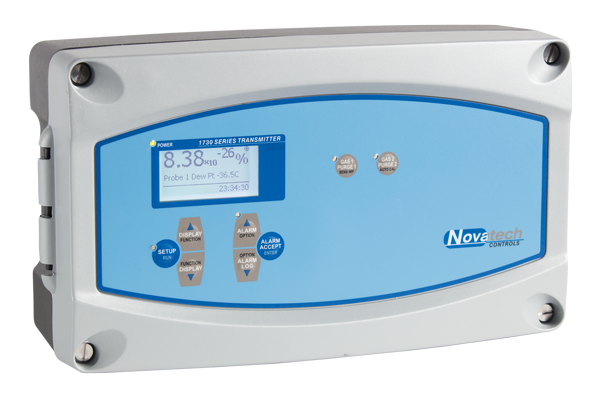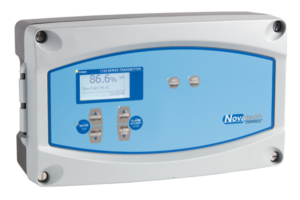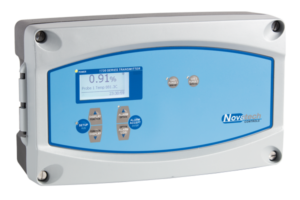Measure Oxygen During Furnace Purge Cycle
The 1738 Dew Point Transmitter uses an platinum zirconia sensor capable of accurately measuring oxygen concentration in the range of 100% down to 1 x 10-30%. This oxygen level can be re-transmitted back to a furnace controller via a scaled 4-20mA analog output, or relay contact to indicate the oxygen is below a set threshold.
Real-time Quality Control during the Annealing Process
During the annealing process the same in-situ probe is used to continuously monitor the dew point temperature inside the furnace.
Additionally this transmitter calculates the pre-reactive oxygen concentration in the atmosphere derived from the remaining oxygen after reacting with the hydrogen present in a state of equilibrium. This measurement is used to detect leaks that may result in dangerous levels of oxygen in the furnace.
Key Features at a Glance
- Set the hydrogen content inside the furnace using the keypad.
- Two fully programmable isolated 4-20mA outputs for re-transmitting up to two process variables including oxygen, dew point and pre-reactive oxygen.
- Four programmable alarm output relays
- Built in digital Modbus™ communications
- Very low maintenance and re-calibration
Dual sensors provides redundancy to prevent costly shutdowns if a probe failure occurs
The Novatech 1738 Dew Point Transmitter can control with two separate in-situ probes providing options for multiple readings, averaging and redundancy protection. Having two probes simultaneously measuring dew point can prevent costly shutdowns in the event of a single probe failure.
The Novatech 1738 tells you what’s happening
All process related information and alerts can be viewed on the local display, as well as being re-transmitted using a range of fully programmable analog outputs, voltage free alarm relays or Modbus™ digital serial communications.
Operators are alerted to any failures or process related alarms with descriptive messages on the transmitter’s local display. Alarms can also be used to trigger internal relays that can be wired to external indicator lamps and buzzers and alarm states can also be monitored via digital communications.




